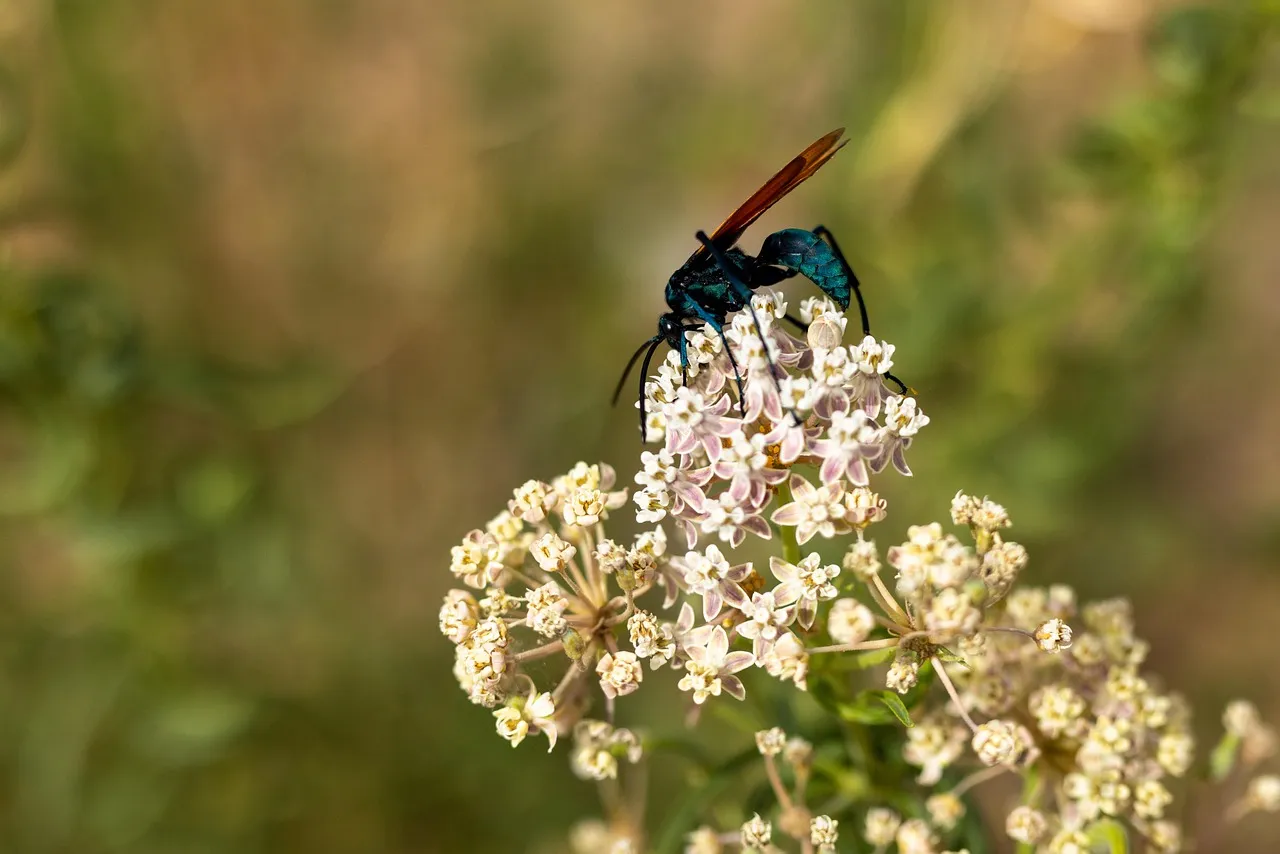Understanding the Tarantula Wasp Sting
The tarantula hawk wasp, a formidable insect with a reputation for its excruciatingly painful sting, presents a unique challenge for anyone unfortunate enough to encounter it. Understanding the nature of this sting is the first step toward survival. These wasps are known for their size, often reaching several inches in length, and their distinctive coloration, which typically includes a black body and orange wings. They are solitary creatures, with the females being the ones capable of delivering the potent sting. Their primary targets are tarantulas, which they paralyze to use as hosts for their larvae. However, humans can also fall victim to their sting, resulting in an immediate and intense pain that has been compared to being struck by lightning. Understanding the characteristics of the wasp and its behavior is crucial for avoiding encounters and knowing how to react if stung.
What Makes the Tarantula Wasp Sting So Painful?
The excruciating pain associated with a tarantula wasp sting is not merely a matter of the physical puncture; it is the result of a potent cocktail of venom injected into the victim. The venom itself is complex, containing various compounds that act on the nervous system. While the exact composition is still being studied, scientists believe that the venom primarily targets pain receptors, causing a rapid and overwhelming sensation of agony. Unlike some other insect stings that may cause localized pain or swelling, the tarantula hawk wasp sting is characterized by its intense, immediate, and widespread nature. The pain is often described as a searing, burning sensation that can radiate throughout the affected area and beyond. The intensity of the pain, which is rated very high on the Schmidt sting pain index, is what makes this sting so infamous.
The Composition of Tarantula Wasp Venom
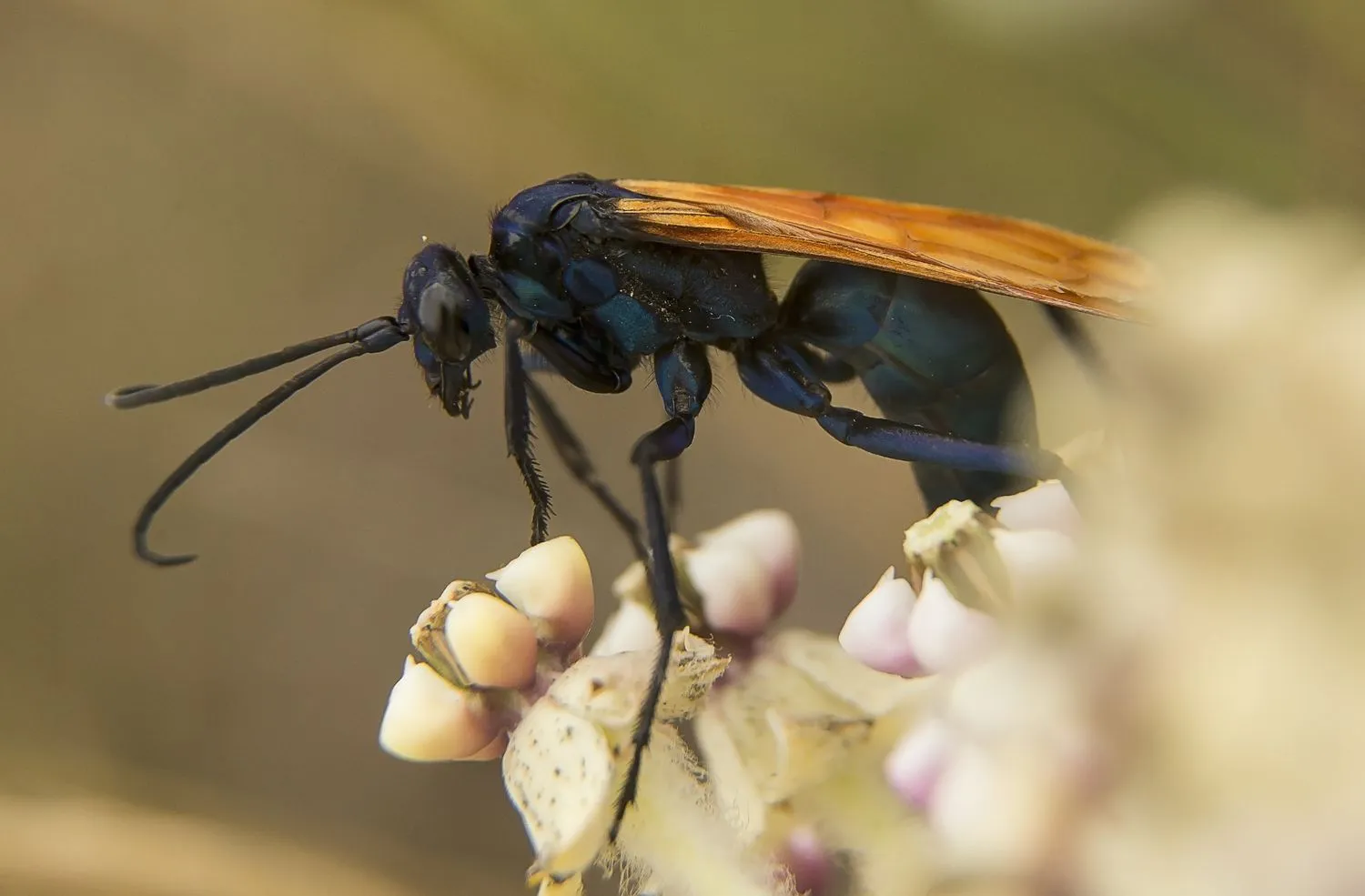
The venom of the tarantula hawk wasp is a sophisticated mixture of compounds designed to incapacitate its prey. While the exact chemical makeup is still under scientific investigation, it is known to include a variety of proteins, peptides, and enzymes. These components work together to produce the characteristic effects of the sting. Some compounds in the venom may directly interact with pain receptors, while others may interfere with nerve signal transmission, leading to the intense pain experienced by victims. The venom’s composition also plays a role in the paralysis of tarantulas, the wasp’s primary prey. This paralytic effect is achieved through the venom’s ability to block neuromuscular junctions, effectively immobilizing the spider. Understanding the venom’s components is essential for developing more effective treatments and pain management strategies for humans who are stung.
How the Venom Affects the Body
Once the tarantula wasp venom enters the body, it triggers a cascade of physiological reactions. The most immediate and noticeable effect is the intense pain, which can be almost debilitating. The venom’s neurotoxins directly stimulate pain receptors, causing the brain to perceive an extreme level of discomfort. In addition to the pain, other physical symptoms may manifest. Swelling and redness are common at the sting site, and the surrounding area may become warm to the touch. Some individuals may experience muscle spasms, tremors, or even temporary paralysis near the site of the sting. While the venom itself is generally not considered lethal to humans, the pain and other symptoms can be overwhelming and may lead to secondary complications, such as dehydration or emotional distress. Knowing what to expect and how to respond is crucial in managing the impact of the sting.
Immediate Steps After a Tarantula Wasp Sting
If you are unfortunate enough to be stung by a tarantula hawk wasp, swift action is crucial. The first step is to move away from the area to avoid further stings. Assess the situation calmly, and ensure your safety. The pain will be immediate and intense; try to remain as composed as possible. Although it may be difficult, attempt to remove the stinger if it is still present. Unlike honeybees, tarantula hawk wasps do not leave their stinger behind. Gently wash the sting site with soap and water to prevent infection. It is important to remain calm and assess your condition for any signs of allergic reaction or other complications. Knowing the immediate steps can significantly influence your experience and recovery.
Assessing the Sting Site
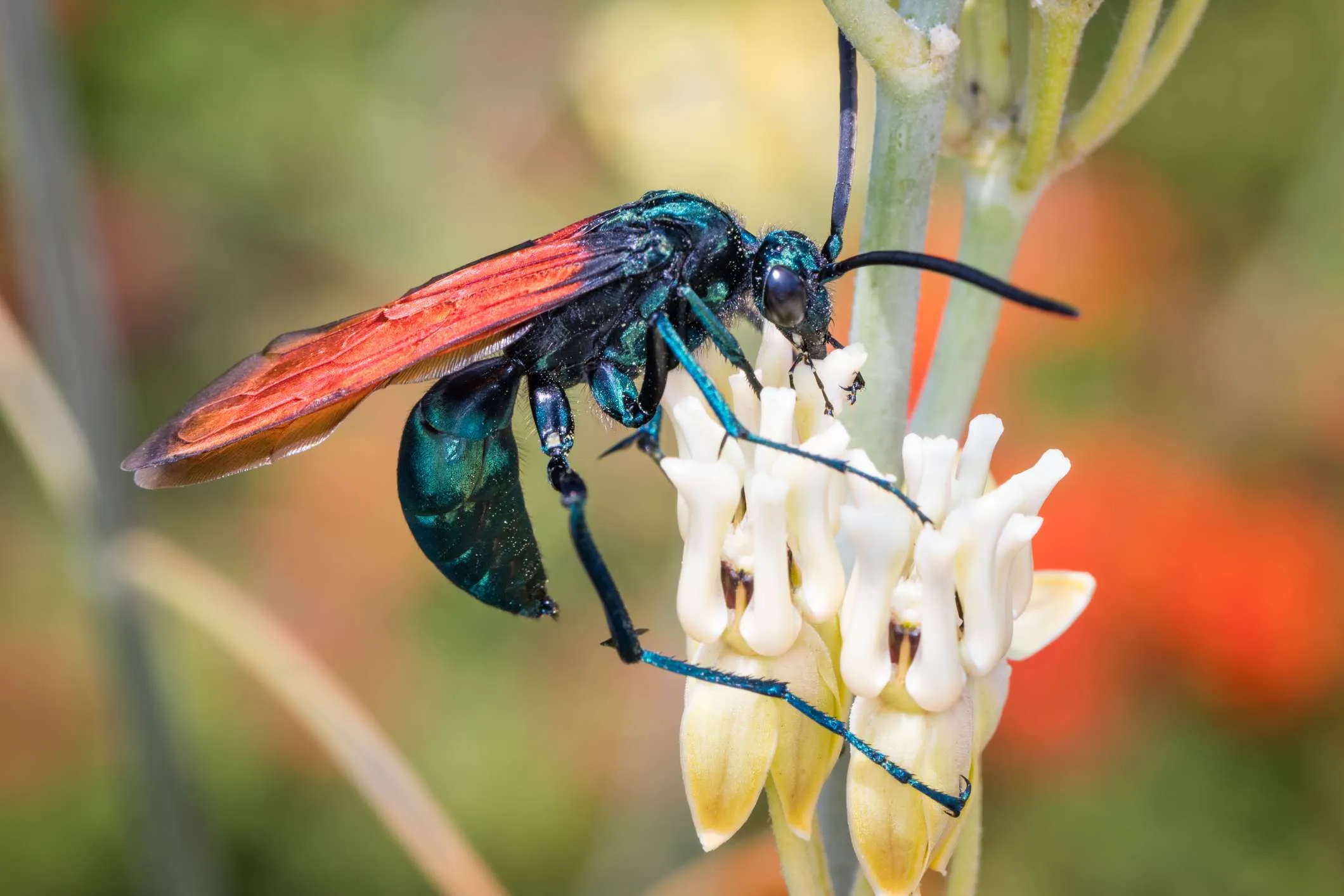
After being stung, a thorough assessment of the sting site is essential. Examine the area carefully for any signs of the stinger; however, tarantula wasps do not typically leave their stingers behind. Look for redness, swelling, and any unusual skin reactions. Monitor the progression of the symptoms over the first few minutes and hours. Note the intensity of the pain, as well as any radiating sensations. Document any other physical symptoms, such as muscle spasms, numbness, or difficulty breathing. This assessment will help you determine the severity of the sting and any potential complications. Regular monitoring enables you to identify and address any emerging issues quickly. Take a photo to track changes over time, which can be helpful information to share with medical professionals.
First Aid Measures
While there is no direct antidote for tarantula wasp venom, several first aid measures can help manage the symptoms and promote recovery. Applying ice packs to the sting site can help reduce pain and swelling. Over-the-counter pain relievers, such as ibuprofen or acetaminophen, may help alleviate the discomfort. Keep the sting site clean and dry to prevent infection. Elevating the affected limb, if possible, may also reduce swelling. Watch for signs of an allergic reaction, such as difficulty breathing, hives, or swelling of the face or throat. If these symptoms occur, seek immediate medical attention. Although the pain is the primary symptom, these first aid measures offer the best chance for a quicker recovery. First aid can also help reduce anxiety while you wait for the effects of the venom to subside.
When to Seek Medical Attention
While most tarantula hawk wasp stings are not life-threatening, there are situations where medical attention is necessary. If you experience any signs of an allergic reaction, such as difficulty breathing, swelling of the face or throat, or hives, seek immediate medical assistance. Severe allergic reactions can quickly become life-threatening. Also, seek medical attention if the pain is unbearable or if the symptoms worsen despite first aid measures. If you experience any neurological symptoms, such as muscle weakness, numbness, or paralysis, consult a healthcare professional immediately. In some cases, secondary infections may occur at the sting site; if you notice signs of infection, such as increased redness, warmth, swelling, or pus, see a doctor promptly. Don’t hesitate to seek professional help when in doubt; it can prevent complications.
Long-Term Effects and Recovery
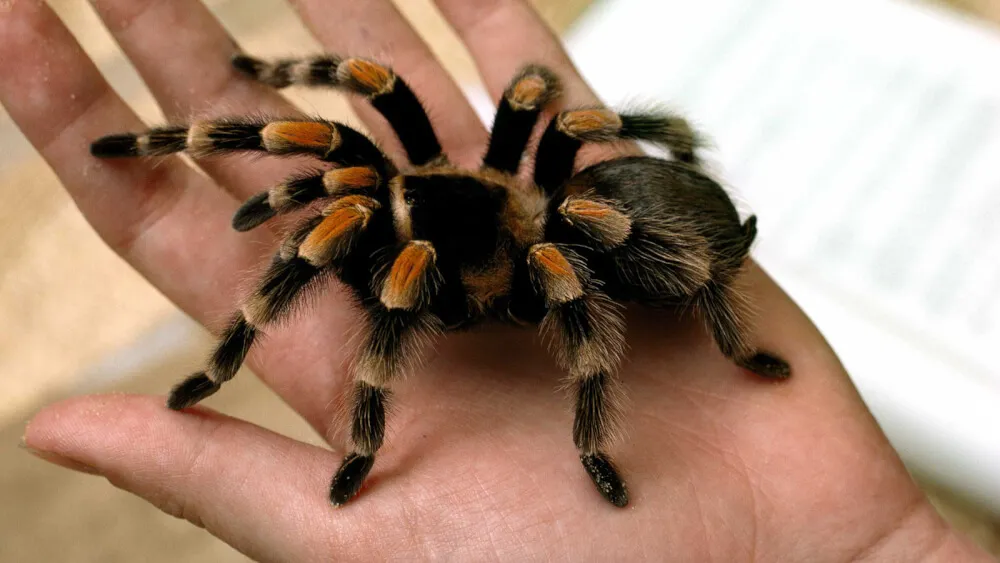
Fortunately, the long-term effects of a tarantula hawk wasp sting are usually minimal. The intense pain typically subsides within a few hours, although some lingering soreness may persist for a day or two. Swelling and redness at the sting site usually resolve within a week. In rare cases, some individuals may experience more prolonged symptoms, such as localized muscle pain or nerve sensitivity. Full recovery is expected in most cases, but it is important to monitor the sting site for any signs of complications. Follow up with your healthcare provider if symptoms persist or worsen. The most important step is being patient and allowing your body time to heal. Long-term effects are very rare, and full recovery is the norm.
Potential Complications
While rare, certain complications can arise from a tarantula hawk wasp sting. Secondary infections are possible, especially if the sting site is not properly cleaned or if the victim scratches the area. Allergic reactions, ranging from mild skin rashes to severe anaphylaxis, can occur. In some cases, individuals may experience localized muscle damage or nerve irritation. Though these complications are uncommon, it is important to be aware of the possibilities and to seek medical attention if any unusual symptoms develop. Any sign of infection, allergic reaction, or other concerning symptoms warrants immediate medical evaluation and treatment. Being informed will help minimize potential long-term issues.
Coping with the Pain and Discomfort
The extreme pain associated with a tarantula hawk wasp sting can be overwhelming. Developing strategies to cope with the discomfort is essential. Immediate measures include applying ice packs, taking over-the-counter pain relievers, and resting. Distraction techniques, such as focusing on a calming activity or engaging in conversation, can help take your mind off the pain. Deep breathing exercises and relaxation techniques can also be beneficial. Remember that the pain is temporary, even though it may feel endless. Be patient with your body and allow it time to recover. Seek support from friends and family and inform them of your situation. Coping mechanisms can help minimize anxiety and make the recovery process more bearable.
Preventing Tarantula Wasp Stings

The best way to survive a tarantula hawk wasp sting is to avoid it altogether. The first step is to be aware of their habitat and activity patterns. These wasps are commonly found in arid or semi-arid regions, especially in the southwestern United States and parts of South America. They are most active during the day. Wear protective clothing, such as long sleeves, long pants, and closed-toe shoes, when working outdoors in areas where these wasps are known to be present. Avoid disturbing the wasps or their nests. Be especially careful around flowering plants, as the wasps may be attracted to nectar. Educate yourself and your family about these insects to minimize the risk of encounters and stings. Prevention is always better than cure.
Identifying Tarantula Wasps
Knowing how to identify a tarantula hawk wasp can aid in avoiding encounters. These wasps are typically large, with a body length of up to two inches or more. They have a distinctive appearance, often with a black or dark blue body and striking orange or reddish wings. They have long, spiny legs and powerful mandibles. The wasps are relatively fast fliers, and they can be aggressive if disturbed. If you see a large, brightly colored wasp with these characteristics, it is likely a tarantula hawk wasp. Learning to distinguish them from other wasp species is key to avoiding the sting. Careful observation in their known habitats will help you identify and avoid them.
Minimizing Exposure to Tarantula Wasps
Beyond identifying and recognizing them, there are specific actions you can take to minimize your exposure to tarantula hawk wasps. When working outdoors in areas where these wasps are known to be present, avoid wearing bright colors that may attract them. Refrain from wearing perfumes or scented lotions, as these can also attract insects. Keep your yard clean and free of debris that could provide hiding places for the wasps. Seal any cracks or openings in your home or outbuildings. If you encounter a tarantula hawk wasp, remain calm and slowly move away. Avoid making sudden movements that could provoke the wasp. By taking these precautions, you can significantly reduce your risk of being stung. Be cautious, and always be aware of your surroundings.
The Impact of Tarantula Wasps on Ecosystems
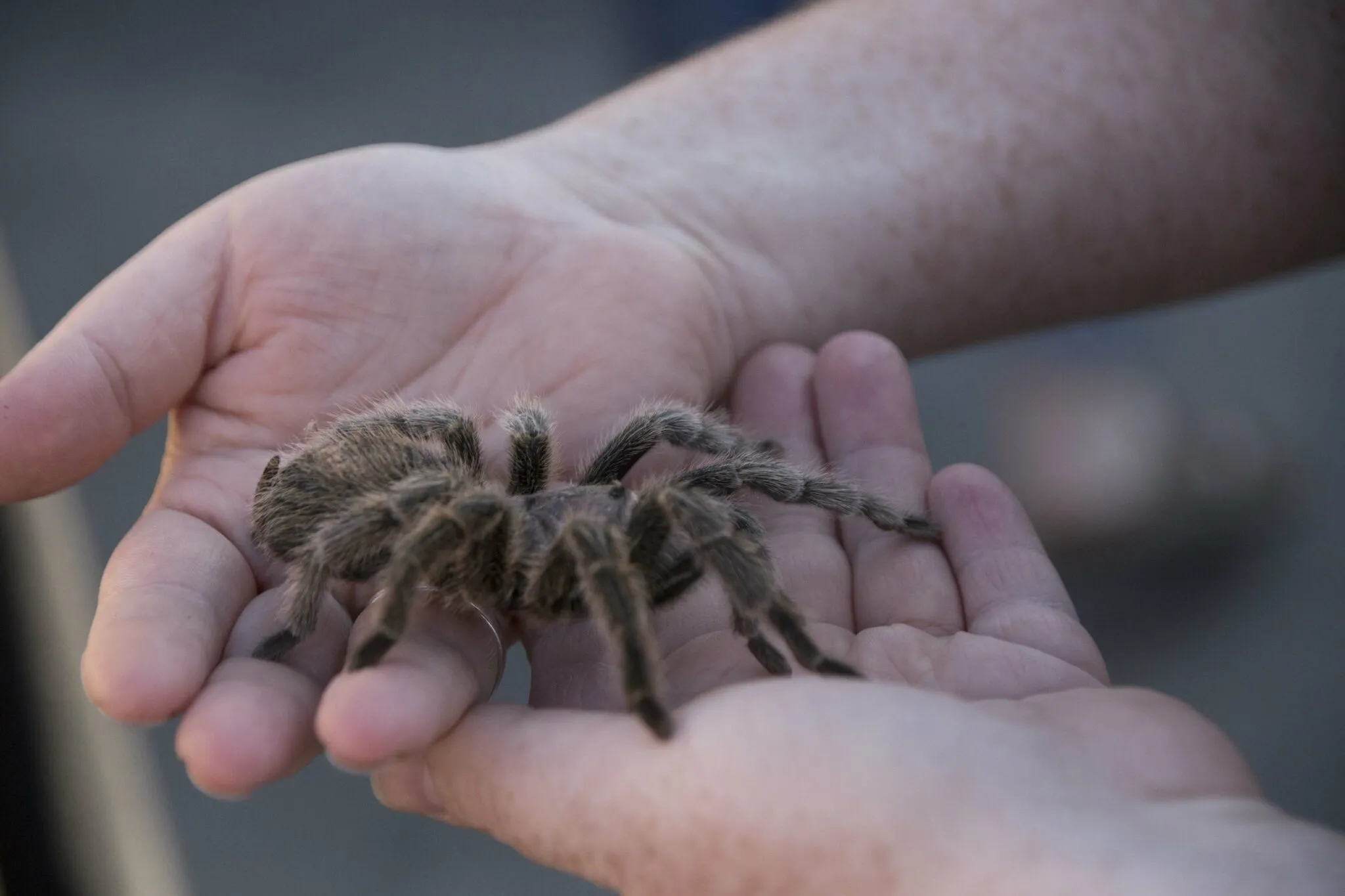
While the tarantula hawk wasp’s sting is a painful experience for humans, these wasps play an essential role in the ecosystems they inhabit. They are a natural predator of tarantulas, helping to control spider populations. They also serve as pollinators, as they feed on nectar. Their presence can, therefore, influence other organisms in their ecosystems. Understanding their role is important for appreciating the balance of nature, even though encountering them may be unpleasant. Although their stings are notorious, tarantula hawk wasps are a fascinating part of the natural world. Awareness of their impact can further help us understand the significance of protecting their environments.
